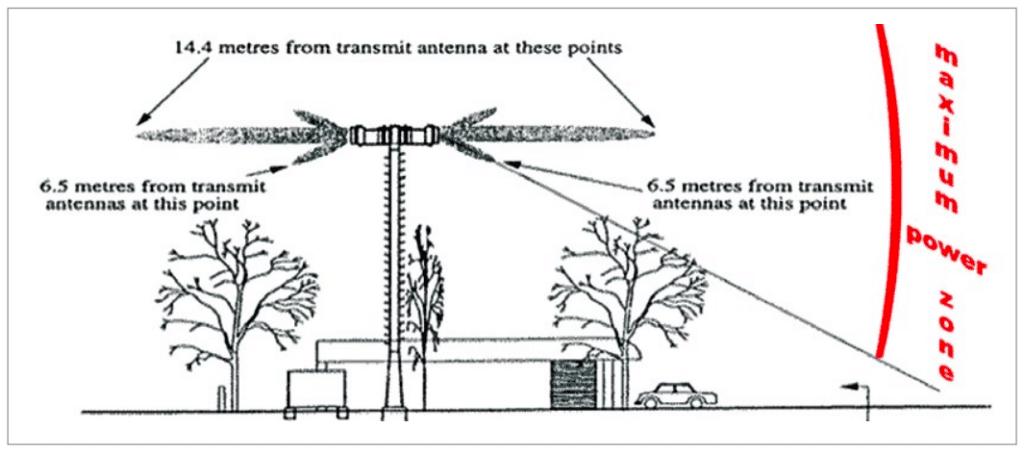Electromagnetic radiation is made up of energy waves generated by the oscillation of electromagnetic fields as they travel through space. This sort of radiation has several different wavelengths, including radio waves, microwaves, infrared, visible light, ultraviolet, X-rays, and gamma rays.
How Do Cell Phones Use Electromagnetic Waves
A mobile phone transmits and receives electromagnetic radiation, specifically radio frequency (RF) waves. When a mobile device is turned on, it continuously releases RF energy, which is a type of electromagnetic radiation that travels at the speed of light.
Mobile phones communicate by sending radio wave signals to local base stations (or cell towers), which are crucial for linking individual phones to the larger mobile network infrastructure.
When a call is made, the microphone records the user’s voice, which the phone’s internal circuits transform into a radio signal. This signal is then broadcast via the phone’s antenna, radiating in all directions.
The base station antenna receives these radio waves, and communication between the mobile phone and the base station occurs through continuous radio wave exchange.

Electromagnetic Wave Radiation from Mobile Antennas
Every mobile phone antenna and cell tower antenna emits radio frequency radiation. Radio waves are most intense near the antenna of a mobile device or base station but decrease in strength with distance.
In densely populated areas, the RF exposure levels are higher due to the proximity of multiple cell towers and the number of connected devices.
The radiated power near a base station is highest close to the antennae mounted on the tower but weakens as you move further away. Cell towers typically have multiple antennas to maintain signal strength and connectivity, but the tower structure itself does not emit radiation; the energy is emitted solely from the antennas.
Importance of Tower Height and Radiation Intensity
Cell tower design takes into account signal efficiency as well as safety. Towers should be tall enough to prevent high-power radiation exposure in regions near ground level.
In metropolitan areas, a large concentration of cell towers intensifies electromagnetic fields in close proximity, resulting in increased RF radiation exposure nearby. Ensuring correct tower separation and following RF safety requirements can help to keep exposure levels safe.
This article was first published on 20 March 2018, and updated recently in 2024.








